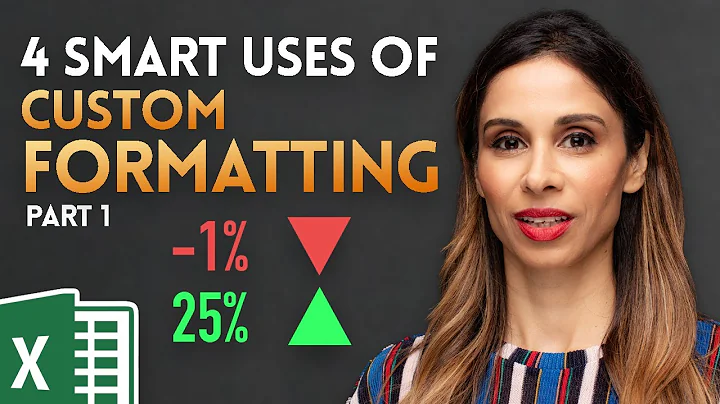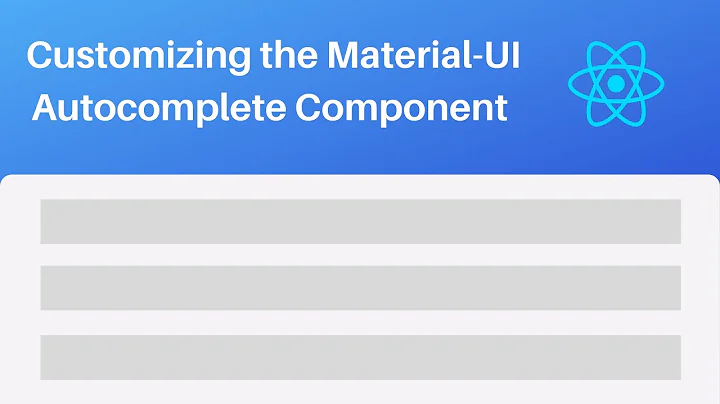How can I custom-format the Autocomplete plug-in results?
Solution 1
Yes, you can if you monkey-patch autocomplete.
In the autocomplete widget included in v1.8rc3 of jQuery UI, the popup of suggestions is created in the _renderMenu function of the autocomplete widget. This function is defined like this:
_renderMenu: function( ul, items ) {
var self = this;
$.each( items, function( index, item ) {
self._renderItem( ul, item );
});
},
The _renderItem function is defined like this:
_renderItem: function( ul, item) {
return $( "<li></li>" )
.data( "item.autocomplete", item )
.append( "<a>" + item.label + "</a>" )
.appendTo( ul );
},
So what you need to do is replace that _renderItem fn with your own creation that produces the desired effect. This technique, redefining an internal function in a library, I have come to learn is called monkey-patching. Here's how I did it:
function monkeyPatchAutocomplete() {
// don't really need this, but in case I did, I could store it and chain
var oldFn = $.ui.autocomplete.prototype._renderItem;
$.ui.autocomplete.prototype._renderItem = function( ul, item) {
var re = new RegExp("^" + this.term) ;
var t = item.label.replace(re,"<span style='font-weight:bold;color:Blue;'>" +
this.term +
"</span>");
return $( "<li></li>" )
.data( "item.autocomplete", item )
.append( "<a>" + t + "</a>" )
.appendTo( ul );
};
}
Call that function once in $(document).ready(...) .
Now, this is a hack, because:
there's a regexp obj created for every item rendered in the list. That regexp obj ought to be re-used for all items.
there's no css class used for the formatting of the completed part. It's an inline style.
This means if you had multiple autocompletes on the same page, they'd all get the same treatment. A css style would solve that.
...but it illustrates the main technique, and it works for your basic requirements.

updated working example: http://output.jsbin.com/qixaxinuhe
To preserve the case of the match strings, as opposed to using the case of the typed characters, use this line:
var t = item.label.replace(re,"<span style='font-weight:bold;color:Blue;'>" +
"$&" +
"</span>");
In other words, starting from the original code above, you just need to replace this.term with "$&".
EDIT
The above changes every autocomplete widget on the page. If you want to change only one, see this question:
How to patch *just one* instance of Autocomplete on a page?
Solution 2
this also works:
$.ui.autocomplete.prototype._renderItem = function (ul, item) {
item.label = item.label.replace(new RegExp("(?![^&;]+;)(?!<[^<>]*)(" + $.ui.autocomplete.escapeRegex(this.term) + ")(?![^<>]*>)(?![^&;]+;)", "gi"), "<strong>$1</strong>");
return $("<li></li>")
.data("item.autocomplete", item)
.append("<a>" + item.label + "</a>")
.appendTo(ul);
};
a combination of @Jörn Zaefferer and @Cheeso's responses.
Solution 3
Super helpful. Thank you. +1.
Here is a light version that sorts on "String must begin with the term":
function hackAutocomplete(){
$.extend($.ui.autocomplete, {
filter: function(array, term){
var matcher = new RegExp("^" + term, "i");
return $.grep(array, function(value){
return matcher.test(value.label || value.value || value);
});
}
});
}
hackAutocomplete();
Solution 4
Here it goes, a functional full example:
<!doctype html>
<html>
<head>
<meta charset="UTF-8">
<title>Autocomplete - jQuery</title>
<link rel="stylesheet" href="http://code.jquery.com/ui/1.10.2/themes/smoothness/jquery-ui.css">
</head>
<body>
<form id="form1" name="form1" method="post" action="">
<label for="search"></label>
<input type="text" name="search" id="search" />
</form>
<script src="http://code.jquery.com/jquery-1.9.1.js"></script>
<script src="http://code.jquery.com/ui/1.10.2/jquery-ui.js"></script>
<script>
$(function(){
$.ui.autocomplete.prototype._renderItem = function (ul, item) {
item.label = item.label.replace(new RegExp("(?![^&;]+;)(?!<[^<>]*)(" + $.ui.autocomplete.escapeRegex(this.term) + ")(?![^<>]*>)(?![^&;]+;)", "gi"), "<strong>$1</strong>");
return $("<li></li>")
.data("item.autocomplete", item)
.append("<a>" + item.label + "</a>")
.appendTo(ul);
};
var availableTags = [
"JavaScript",
"ActionScript",
"C++",
"Delphi",
"Cobol",
"Java",
"Ruby",
"Python",
"Perl",
"Groove",
"Lisp",
"Pascal",
"Assembly",
"Cliper",
];
$('#search').autocomplete({
source: availableTags,
minLength: 3
});
});
</script>
</body>
</html>
Hope this helps
Solution 5
jQueryUI 1.9.0 changes how _renderItem works.
The code below takes this change into consideration and also shows how I was doing highlight matching using Jörn Zaefferer's jQuery Autocomplete plugin. It will highlight all individual terms in the overall search term.
Since moving to using Knockout and jqAuto I found this a much easier way of styling the results.
function monkeyPatchAutocomplete() {
$.ui.autocomplete.prototype._renderItem = function (ul, item) {
// Escape any regex syntax inside this.term
var cleanTerm = this.term.replace(/[-\/\\^$*+?.()|[\]{}]/g, '\\$&');
// Build pipe separated string of terms to highlight
var keywords = $.trim(cleanTerm).replace(' ', ' ').split(' ').join('|');
// Get the new label text to use with matched terms wrapped
// in a span tag with a class to do the highlighting
var re = new RegExp("(" + keywords + ")", "gi");
var output = item.label.replace(re,
'<span class="ui-menu-item-highlight">$1</span>');
return $("<li>")
.append($("<a>").html(output))
.appendTo(ul);
};
};
$(function () {
monkeyPatchAutocomplete();
});
Related videos on Youtube
dev.e.loper
Updated on September 07, 2020Comments
-
dev.e.loper over 3 years
I’m using the jQuery UI Autocomplete plug-in. Is there a way to highlight search character sequence in drop-down results?
For example, if I have “foo bar” as data and I type "foo" I’ll get “foo bar” in the drop-down, like this:
-
dev.e.loper about 14 yearsyeah I'm aware of this plug in. however, we are using jQueryUI in our app so it would be nice to get this working with jQueryUI Autocomplete plug-in
-
dev.e.loper about 14 yearsThanks Cheeso. Do you have jsbin link for this?
-
shek over 13 yearsAs of 2010-06-23, the jQuery Autocomplete plugin has been deprecated in favor of the jQuery UI Autocomplete plugin. See bassistance.de/jquery-plugins/jquery-plugin-autocomplete for more information
-
emanaton about 13 yearsNote that if you do chain things along, it's important to reset context: oldFn.apply(this, [ul, item]);
-
David Ryder almost 13 yearsThank you very much! Would be awesome if this became a part of jQuery UI.
-
David Ryder almost 13 yearsOne thing I would say is if you want it to bold the result in any part of the matched string (not just the beginning) modify the RegExp line to this: var re = new RegExp(this.term) ;
-
atp almost 13 yearsI liked this one better, as it matches the whole word.
-
Noel Abrahams over 12 yearsThis is probably the best solution, but string.split is capable of only case-sensitive matches, I believe.
-
russau over 12 yearsIs this answer now out of date? JQ UI have a simple example for custom results here: jqueryui.com/demos/autocomplete/#custom-data
-
Cheeso over 12 years@russau - no, I don't think it is out of date. I didn't see anything on that page regarding custom formatting of the results.
-
 dreamerkumar about 12 yearsThanks Orolo, I was using autocomplete at multiple locations and wanted a central place where I can make the change to show only result that start with the typed characters and this one is what I exactly needed!
dreamerkumar about 12 yearsThanks Orolo, I was using autocomplete at multiple locations and wanted a central place where I can make the change to show only result that start with the typed characters and this one is what I exactly needed! -
 Kijana Woodard almost 12 yearsThis works well. The only thing to look out for is that item.label is getting replaced. For me, I was getting "<strong..." in my text box. Just assigning the replace result to another variable cleared that up. You wouldn't have this problem if your data contains a value property that gets put into the text box.
Kijana Woodard almost 12 yearsThis works well. The only thing to look out for is that item.label is getting replaced. For me, I was getting "<strong..." in my text box. Just assigning the replace result to another variable cleared that up. You wouldn't have this problem if your data contains a value property that gets put into the text box. -
 Shmiddty over 11 yearsWouldn't it be better to modify
Shmiddty over 11 yearsWouldn't it be better to modifyitem.labeland call the built in function passing the modified item object? -
leopic over 11 yearsIf anyone is still looking into this, you don't need to tamper with the widget's original code, you can create a new custom widget that inherits from autocomplete and override the method there
-
George Mavritsakis over 11 yearsI think you are re-inventing the wheel! Why don't you use regular expressions which are faster, easier and more compact than all this code?
-
Lucky over 11 yearsthe above with a scroll bar added into it....check this url jsbin.com/ezifi/569/edit
-
 Patrick over 11 yearsDo you have any way to match words based on non-case-sensitive ? Because if I have a search "alfa", it will not highlight "Alfa"
Patrick over 11 yearsDo you have any way to match words based on non-case-sensitive ? Because if I have a search "alfa", it will not highlight "Alfa" -
Liron Harel over 11 yearsWhen I search with chars like '(' it causes an error ("Uncaught SyntaxError: Invalid regular expression: /(sam|at|()/: Unterminated group ") anyway to solve this by preventing collission with regex?
-
leora almost 11 yearsthis doesn't work if you have an autocomplete that supports multiple values. any suggestions?
-
 Aniket Kulkarni over 10 yearsThanks. This is the best solution of all. It works for case insensitive.
Aniket Kulkarni over 10 yearsThanks. This is the best solution of all. It works for case insensitive. -
 Sam about 10 yearsJQueryUI autocomplete appears to do a case insensitive search by default, so it makes sense to add the "i" flag in the RegExp object. There's also no reason to use the "^" in the regex as @DavidRyder mentioned. Like:
Sam about 10 yearsJQueryUI autocomplete appears to do a case insensitive search by default, so it makes sense to add the "i" flag in the RegExp object. There's also no reason to use the "^" in the regex as @DavidRyder mentioned. Like:var re = new RegExp(this.term, "i");Great post! -
 Sam about 10 yearsdoesn't appear to anymore (as far as I can tell)
Sam about 10 yearsdoesn't appear to anymore (as far as I can tell) -
 Sam about 10 yearsAwesome answer! Love that it highlights the terms regardless of where they appear. Very cool. Thanks for updating the post. One question I did have is about the .ui-menu-item-highlight class you use. Is this expected to be defined by jquery-ui or by consumers? I changed the class name to suite my own means and simply made the font-weight bold.
Sam about 10 yearsAwesome answer! Love that it highlights the terms regardless of where they appear. Very cool. Thanks for updating the post. One question I did have is about the .ui-menu-item-highlight class you use. Is this expected to be defined by jquery-ui or by consumers? I changed the class name to suite my own means and simply made the font-weight bold..jqAutocompleteMatch { font-weight: bold; } -
 Sam about 10 years@IdanShechter Great comment. Some logic to escape the
Sam about 10 years@IdanShechter Great comment. Some logic to escape thethis.termfor regex should be used before doing any processing. See Escape string for use in Javascript regex as one of many answers to how to do this. -
adamst85 about 10 yearsThe simplest way to get text highlighting in your autocomplete results. Obviously look out for the bugs as pointed out by leora and Kijana above
-
Illidan over 8 yearsIn order to make it NOT case sensitive, add "gi" argument to Regular Expression: var re = new RegExp("^" + this.term, "gi");
-
zchrykng about 8 yearsGenerally it is better to spend time answering newer questions, or ones without answers rather than answering a question 6 years old that has already been answered.
-
 Brian Leishman over 4 years@RNKushwaha anywhere before you call to
Brian Leishman over 4 years@RNKushwaha anywhere before you call to$().autocomplete()










